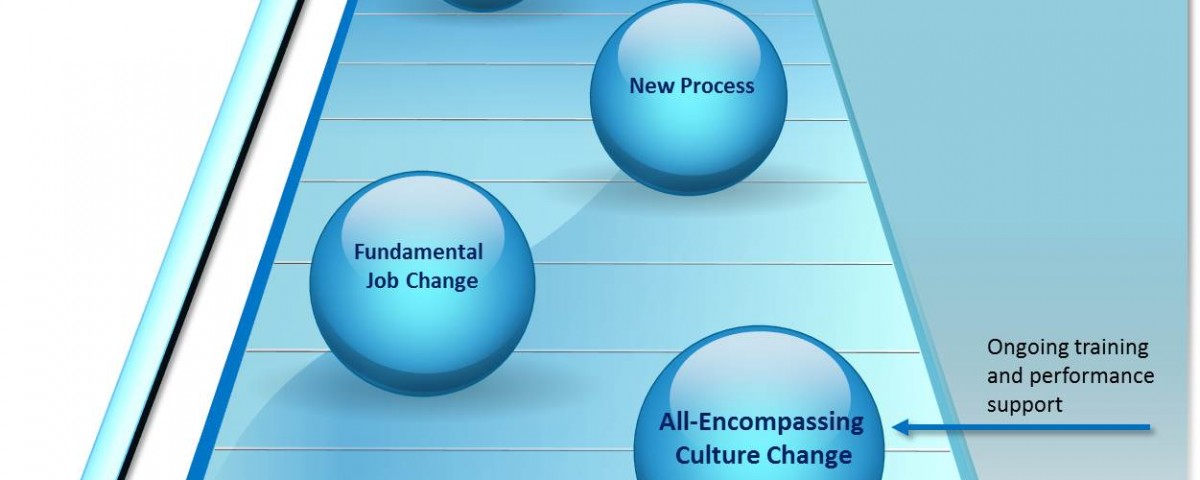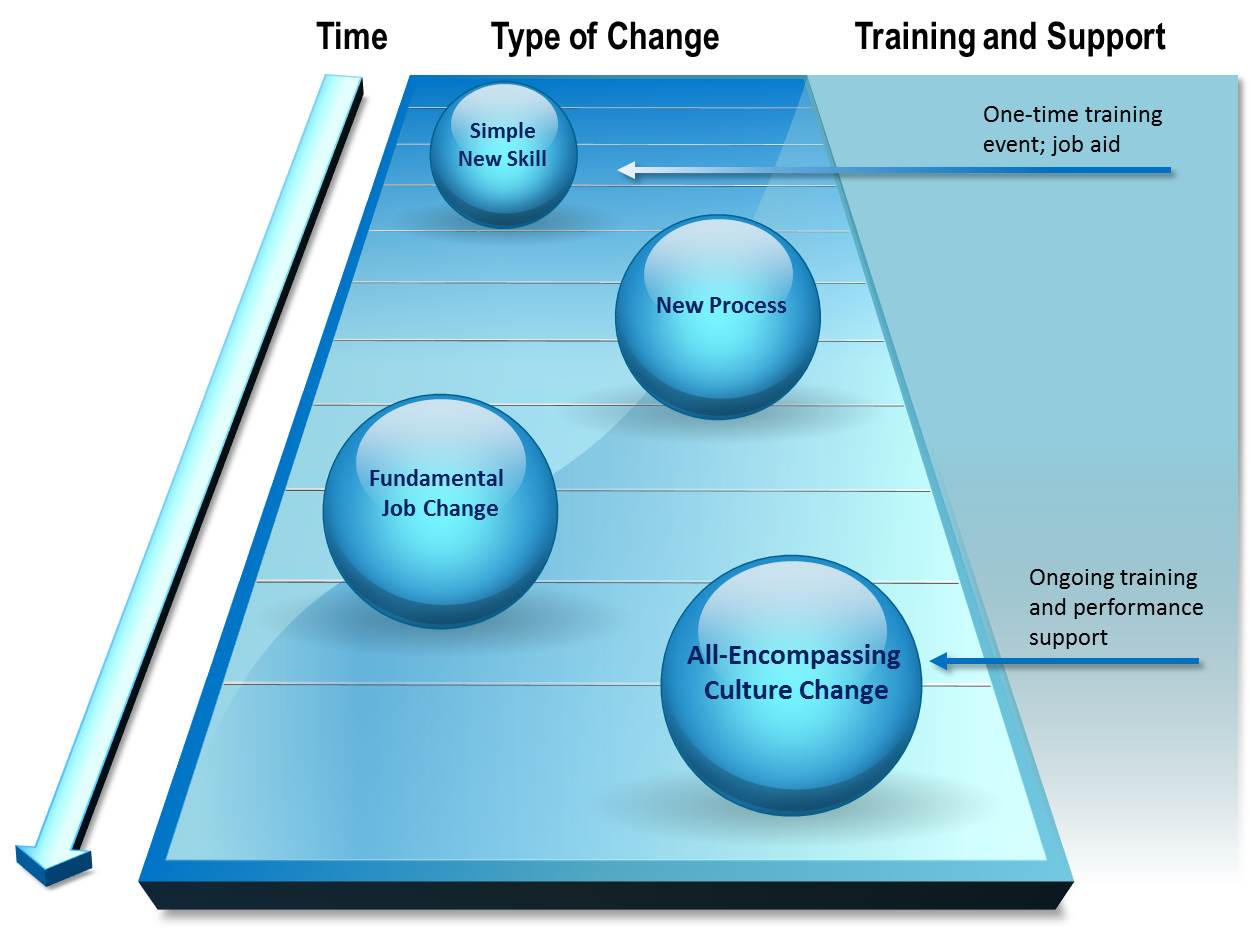8 Questions To Ask If You Want Your Next Training To Be Effective

Can a Blog Post be a Game?
June 7, 2013
One Simple Thing You Can Do To Be More Creative
July 15, 2013Your organization is making a big change—introducing a new system, radically changing how people do their jobs, adding a new dimension to the mission, addressing some profound change in your environment…. Your job is to make sure that people are ready to make this change. Do they understand it? Do they know what to do? Do they have the right skills?
You hire a training company to do the job and figure you’re done. They’ve got it from here, right? Well, sort of. Much like hiring a contractor to remodel your kitchen, you’ll need to guide them as they work so that you end up with what you really want.
Here are 8 questions your training vendor should be asking you—but if they don’t, be sure to ask these of yourself, so you end up with training that achieves desired results.
1. Is training what is really needed? All too often, the kneejerk response to “We need people to…” is to send them to training. But the true issue may be something else altogether. Maybe people have no incentive to do what you want them to do. Maybe your culture inhibits the very behaviors you want to encourage. Before you spend the dollars on training, make sure that someone, either in-house or an external vendor, has analyzed the situation to determine the root cause of the issue. Training may be a part of the solution, or it may not. If it’s not, then all the training in the world isn’t going to change things. If it is, the data from your analysis will provide good information for training design.
2. How significant is the change to be made? We all want things to happen now. We want the changes we envision, those great things that are going to revolutionize the organization, to go into effect the day we announce them. But organizations move slowly. You have to be realistic about how long it will take for major changes to occur.
If you’ve got a new piece of software that’s really intuitive and doesn’t radically change learners’ jobs, then a quick e-learning may be all you need. But if you’re going after any significant change in the way people work, and especially if you’re trying to change a culture, a quick class or e-learning isn’t going to cut it. You’re going to need time—lots of time. And you’re going to need to support employees every step of the way as they make the transition from what they’ve been doing to what you want them to do. Be realistic about where you fall on this continuum:
Then invest the time and resources needed to achieve your performance goals.
3. Who are the key stakeholders for this training? You may have a crystal-clear picture of the solution for your latest performance issue, but remember that there are other perspectives. For example, the people who are taking the training may have a very different perspective from those who are paying for it. The managers who oversee the trainees will have their own perspectives and set of needs. You’ve got a lot of people to please, and they will all have different ideas about the right training approach. So you need to make sure they’re all involved upfront. Otherwise, you risk the dreaded “11th hour reviewer,” that high-level stakeholder who comes in after the budget is spent and questions every decision made to date.
A good way to start a training project is to convene all stakeholders for a “Rapid Design” session. In this facilitated session, key stakeholders get a chance to air their needs, negotiate features, and see the results of their decisions. Even if they walk away not fully in agreement, they will at least understand why certain decisions and tradeoffs were made.
As development progresses, keep stakeholders in the loop. Give them opportunities to offer feedback—before you’ve spent a lot of money on development. It may take a little more work upfront, but it will protect you from unhappy derailments when it’s time to deliver.
4. What should learners be able to do when they’ve finished this training? Too many people start training development by talking about the content: What’s the content for this training? This often results in training that misses the mark because it focuses on the wrong behaviors. You may end up with a supercool e-learning activity that shows the entire history of your organization, but is that going to take learners to the desired level of performance? Put the words “training” and “content” out of your mind. Instead, focus on desired performance. In your imagination, what does that future look like? What will people be doing? If you can make that picture clear and vivid for your training vendor, you will end up with training that hits that mark.
5. How will we know we’ve been successful? As you’re imagining the future, you should be thinking specifically about what success looks like and what criteria you’ll use to measure success. It’s not enough to have people tell you, “That was great!” Or to be excited about some cool new technology you got to use. Remember, you started this project because you had an organizational goal. You wanted people to do something better so your organization would be better. Are people seeing those great efficiencies you imagined when you changed their work processes? Are they more productive because of that new system you installed? Is that new initiative making you more effective at meeting your mission? If you identify upfront the measures you’ll use to answer those questions, you’ll give your training vendor a much clearer picture of the behaviors on which to focus. AND, once the training is in place, you’ll have real data to show its effectiveness. That should get management’s attention.
6. What is the environment in which this training will be delivered? For e-learning, you need to be clear about what your technical infrastructure can/cannot support. What sounds great on paper has to work in the real world, and the real world has limitations, such as systems that don’t support Flash or audio. Don’t assume you know. Check. Get your organization’s IT department involved. You don’t want to end up with the greatest training in the world that will not run on your systems. Your training vendor should give you a list of specifications for their e-learning. Have your technical staff review those specifications and flag any issues.
For instructor-led training, you’ll need to be sure your facilities support the designed activities. If you don’t have breakout rooms for small-group activities, your training vendor needs to know that, so they can design activities that will work in a large training room. Make sure your training vendor is aware of any limitations before they start designing. If you tell the training vendor that all participants will have laptops that they can bring to class, you will probably get activities that use those laptops. If participants don’t bring those laptops to the training, the activity is dead in the water. Your training vendor should provide clear specifications for the facilities, equipment, and resources needed for the training. Make sure you review those specifications carefully and discuss any concerns. Better to redesign earlier rather than later.
7. What organizational processes must the training go through before launch? Many organizations have standard processes for technology testing before launching e-learning, as well as processes for security and legal reviews. Make sure you know what tests and reviews are required and how long each will take, and be sure your schedule accounts for those. It’s never fun to find out the week before training launch that you still have three weeks of reviews to get through!
8. Who will provide accurate information for the training and check that it’s conveyed correctly? Typically, the training professionals you hire won’t know exactly how your organization works and they won’t know the intricacies of that new system or process you’re implementing. So, you’ll need Subject Matter Experts (SMEs) who can provide accurate information and then review the training to be sure it conveys key points accurately. Remember, though, that SMEs have day jobs that take up most if not all of their time. You can’t bank on their good nature to make time to help you develop the training. You need to make sure that time is incorporated into their schedules so that they have the time to work with training designers as needed. If you neglect to schedule SMEs, your project will stall as designers wait for key technical information.
Be sure the SMEs you identify have the time to work on the training project. The software guru who is already working 80 hours a week to meet an aggressive product rollout is probably not the best choice. Find someone who can commit to a couple of hours a day or week. Instructional designers will do their homework to answer as many questions as they can on their own, and they’ll prepare to make SME meetings as efficient as possible.
So, there you go!
Eight simple questions that can uncover pitfalls and illuminate the path to true training success—a product that achieves desired results. Which of these questions have you asked during your past training projects? Which do you need to add to your repertoire?











